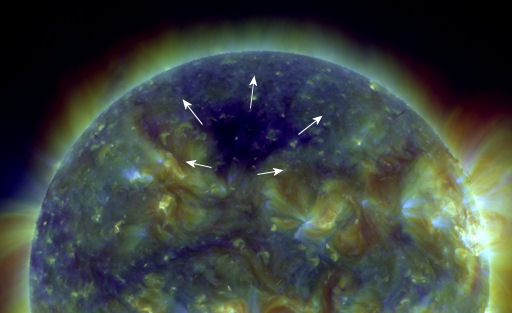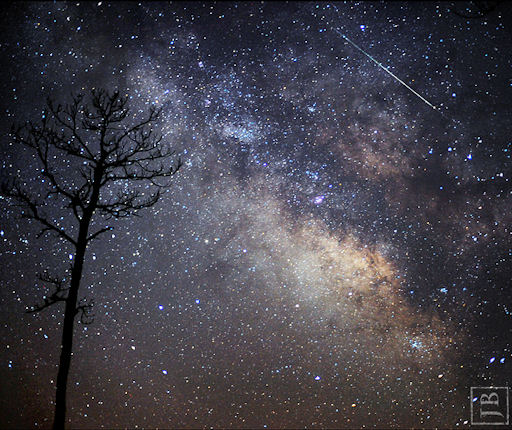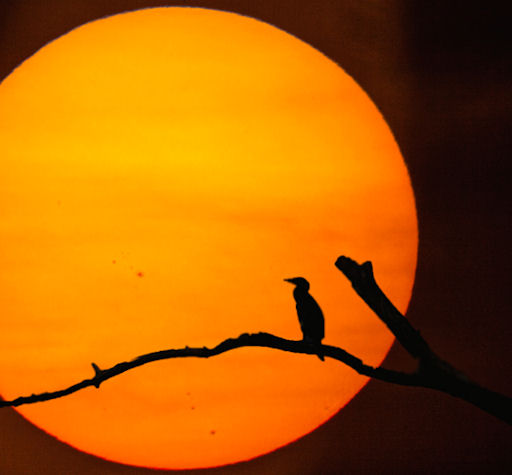Listen to radar echoes from satellites and meteors, live on listener-supported Space Weather Radio. | | |
DECREASING CHANCE OF FLARES: The magnetic field of Earth-facing sunspot AR1723 is in decay. This has prompted NOAA forecasters to lower the odds of M-class flares today to only 10%, and X-flares to only 1%. Solar flare alerts: text, voice.
NORTHERN CORONAL HOLE: A dark coronal hole has opened up in the sun's northern hemisphere, and it is spewing a stream of solar wind into space. NASA's Solar Dynamics Observatory took this multiwavelength UV photo of the gap on April 18th:

Coronal holes are places where the sun's magnetic field opens up and allows solar wind to escape. In the image, arrows denote roughly where the solar wind is going. Solar wind from this particular coronal hole should reach Earth's orbit on April 21-22. A direct hit is unlikely, though. Because of the coronal hole's high northern latitude, the solar wind stream is likely to brush only the northern half of Earth's magnetic field. Nevertheless, polar sky watchers should be alert for auroras when it arrives. Auroras alerts: text, voice.
Realtime Aurora Photo Gallery
LYRID METEOR SHOWER: Earth is entering a stream of debris from ancient Comet Thatcher, source of the annual Lyrid Meteor Shower. Usually the shower is mild (10-20 meteors per hour) but unmapped filaments of dust in the comet's tail sometimes trigger outbursts ten times stronger. Forecasters expect the peak to occur on April 21-22. Photographer Jeff Berkes caught this early-arriving Lyrid during a deep exposure of the Milky Way on April 14th:

"On the night I saw this meteor, I had been traveling for days while sleeping out of my car as I continue my dark sky projects," says Berkes. "Watching a meteor fall right through the middle of your frame is the best! In addition to this Lyrid over the swamps of Maryland, I was also able to capture a couple of Lyrids over the Cape Hatteras Lighthouse and the Bodie Island Lighthouse. This is a good sign that the Lyrids are coming!"
Realtime Meteor Photo Gallery
SPRING SUNSET: The sun can do more than spark radiation storms and ignite auroras. It also affects the mood of observers. "I find that spring sunsets are a good anti-depressant," says photographer Kamila Mazurkiewicz who sends this picture, taken yesterday evening, from Pulawy, Poland:

The photo depicts "a black cormorant (Phalacrocorax carbo), a loner, sitting quietly on a withered branch," says Mazurkiewicz. "The sound of birds, the sight of dead trees in the backwaters of the Wisla river--I savor the taste of spring."
Realtime Space Weather Photo Gallery
Realtime Comet Photo Gallery
Realtime Noctilucent Cloud Photo Gallery
[previous years: 2003, 2004, 2005, 2006, 2007, 2008, 2009, 2011]

